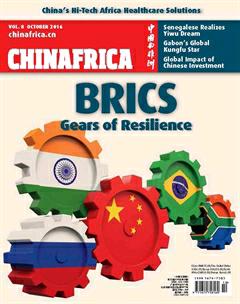Briefs
Standardization Promotion China will promote standardization to push industrial upgrades and foster new competitive edges as part of its reform agenda, Chinese Premier Li Keqiang said in September. Standardization represents a countrys core industrial competitiveness and overall prowess, Li said while addressing the 39th International Organization for Standardization (ISO) General Assembly. China will speed up the development of standards for emerging sectors, technology and business models to promote innovation and entrepreneurship while forcing out outdated production capacity, Li said. The government encourages entrepreneurs and companies to make full use of standardization to offer higher quality products to customers and will standardize government management to streamline administration and improve efficiency.
Boosting Green Cars China will accelerate construction of charging facilities for electric vehicle in residential areas to boost production and sales of green cars, according to a document jointly released by the National Development and Reform Commission(NDRC) and three other central departments. More electric vehicle charging stations will be built in Beijing, Tianjin, Hebei Province, Shandong Province, and major cities in the Yangtze River Delta and Pearl River Delta. Electric power companies are asked to help with the construction of charging stations, said the document. NDRC data showed that there were about 81,000 public charging stations in China as of the end of June, up 65 percent compared with the end of last year. According to the China Energy Administration, China plans to build a nationwide charging-station network that will fulfill the power demands of 5 million electric vehicles by 2020.
Aviation Market Soars China will become the worlds first aviation market to exceed $1 trillion in value in 20 years, U.S. airplane giant Boeing forecasted in September. It projected a demand for 6,810 new airplanes in the country over the next two decades, estimating the total value of the new aircraft at $1.025 trillion. With travel and transportation becoming key services, passenger traffic is expected to grow 6.4 percent annually in China over the coming 20 years. China will need 5,110 new single-aisle airplanes through 2035, accounting for 75 percent of the total new deliveries, according to Boeing.
Quota Loosened China relaxed quotas for qualified foreign institutions to invest in its stock market in September, in the countrys latest efforts to open up its financial sector. Foreign investors in the countrys Renminbi Qualified Foreign Institutional Investor (RQFII) program will be granted quota limits based on their aggregate assets, announced the Peoples Bank of China and State Administration of Foreign Exchange. Previously, the RQFII quota was subject to approval from financial regulators. Institutions will still have to apply for extra investment quotas, while sovereign wealth funds and central banks are exempted from the restriction. Launched in December 2011, the RQFII program aims to widen investment channels for overseas yuan funds on the Chinese mainland, opening the domestic market more widely and increasing the global use of renminbi, the Chinese currency. By the end of August, China had approved over 510 billion yuan ($76.3 billion) for 170 foreign investors under the program.
Seven More FTZs Chinese authorities have decided to set up seven new free trade zones (FTZs) across the country, bringing the total number to 11 as China looks to replicate the success of previous trials. The new FTZs will be located in the provinces of Liaoning, Zhejiang, Henan, Hubei, Sichuan and Shaanxi as well as Chongqing Municipality, according to Minister of Commerce Gao Hucheng. The expansion came nearly three years after the launch of Chinas first FTZ in Shanghai to test a broad range of economic reforms, including more openness to foreign investment and fewer restrictions on capital flows. With the addition of seven more FTZs, China is hoping to press ahead with wider reforms, while allowing the regions to tap their unique geographical and industrial advantages for further experiments.
Geoinformation Development China has issued a geographic information development plan, vowing to improve its surveying and mapping capability and services. By 2020, the country will establish a non-profit system providing integrated services including basic and emergency surveying and mapping, condition monitoring, aerial and space remote sensing as well as global geoinformation resources developing, the plan said. According to the document, China will set up a national satellite navigation and positioning network consisting of over 2,500 base stations in five years. The output value of Chinas geographic information industry is forecast to exceed 800 billion yuan ($120 billion) by 2020. The document was jointly released by the National Development and Reform Commission and the National Administration of Surveying, Mapping and Geoinformation.

